Why and How to Open a Microschool
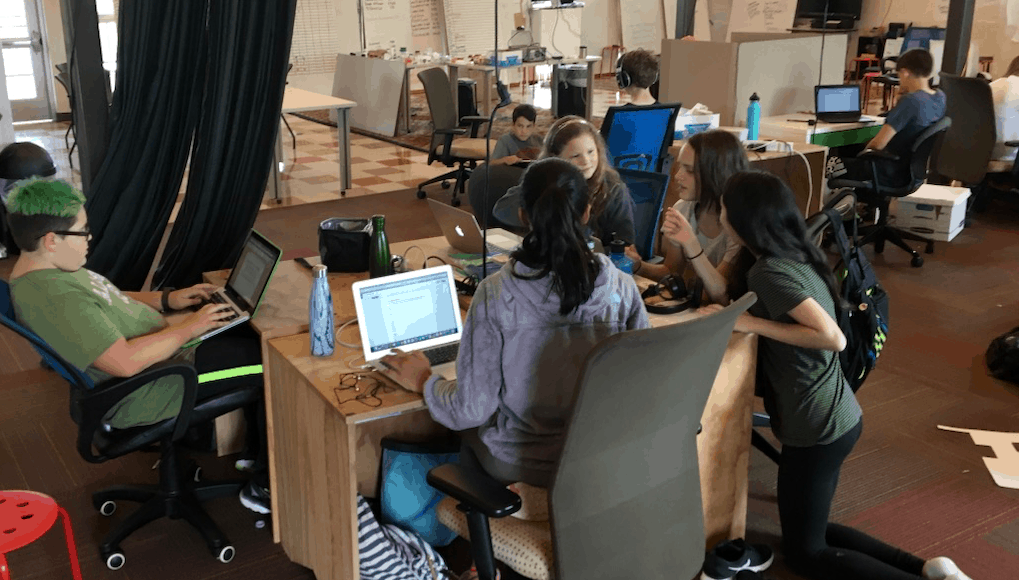
Microschools have been popping up around the country for the last decade. New learning models and tools have made it easier to open small schools serving 15 to 150 students.
There are at least four reasons to open a microschool:
- Speed: Given their small size, microschools can be opened quickly in nontraditional spaces. They can be used to kickstart a change process by illustrating high engagement learning experiences and environments.
- Community: Microschools rapidly create new community-connected learning options (e.g., themes, careers, and experiences) for students.
- Needs: They can be designed to quickly address underserved student populations (e.g., preschool, dropout recovery and career education).
- Leadership: Microschools can be instrumental in leveraging teacher leadership.
Starting a microschool can lead to four successful outcomes:
- Small option: a good microschool with lean staffing can remain an attractive and sustainable local option.
- Flip host: strategies tested and exhibited by a good microschool launched within a larger school could be adopted by the host school.
- Big option: a good microschool could expand into a larger school option.
- Network: A successful microschool could serve as an anchor for a network of schools (examples below).
Some microschools are distinctive options and intentionally small:
- One Stone is a student-centered design-focused school in Boise, Idaho (see feature, podcast, conference, and movie).
- NuVu Studio is a design-focused school in Cambridge, Mass. (see feature).
- The Forest School is an Acton Academy in the woods of Fayetteville, Ga.
- NOLA Micro Schools is an Acton Academy affiliate in New Orleans, La.
- LEADprep is two secondary microschools in the Seattle area where young people develop the confidence and ability to lead.
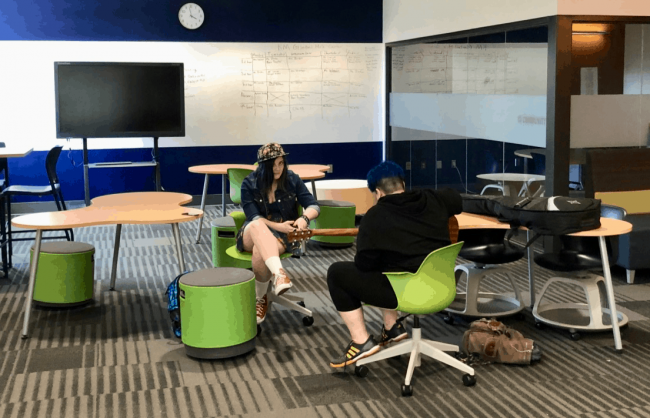
Microschools and academies within large schools can offer distinctive pathway options:
- P-Tech and early college academies in Dallas, Texas are examples of school-within-a-school options that provide a pathway to college credit (up to an AA degree) while in high school.
- E.P.I.C.C Academy at East Hall High in Gainesville, Ga. is a student-centered alternative for ninth and tenth graders (see feature).
Microschools can be launched in large high schools to kickstart personalized learning:
- Kettle Moraine High School in suburban Milwaukee is home to three small schools launched to kickstart high school transformation (see blog and podcast).
- Nearly all of the 380+ school partners of Summit Learning launched the personalized program in a small program.
- Pathfinder spaces at all three levels of Singapore American School enabled teacher teams to illustrate and integrate the use of new flexible learning spaces.
Microschools launched in large schools can pilot competency-based learning:
- Huntley High in suburban Chicago launched Vanguard Vision, a 200-student, competency-based academy as part of a state pilot program and an iterative approach to personalize learning in the large school. The academy will grow to 400 students and some of the practices will be incorporated schoolwide (see blog).
- Synergy is a student-centered academy at Kuna Middle School in a southwestern suburb of Boise. It’s one of the 32 schools in the Idaho Mastery Education Network. A team of four teachers supports just over 100 students using the Summit Learning platform (see feature).
Networks of microschools (most are standalone academies) serve more students at scale:
- Big Picture Learning is a network of 65 small US schools that focus on internships.
- Teacher-Powered Schools Network is a network of small teacher-led schools.
- Acton Academy is a global network of 200+ private microschools (see feature).
- Place Network is a collaborative of a dozen place-based rural microschools supported by Teton Science Schools (see feature and podcast.)
- Fusion Academy is a national network of small private schools that feature 1:1 tutorials.
- Teacher-Powered Schools consists of 120 schools in 19 states (with state networks in Massachusetts, Minnesota and Wisconsin).
- StreetSchool Network helps faith-based communities give students a second chance at educational success.
- Prenda empowers ‘nano-schools’ of 8 to 10 learners across Phoenix, Ariz.
Support organizations are launching that encourage early-stage founders:
- 4.0 Schools encourages entrepreneurial problem-solving by offering an Essentials Fellowship to develop an idea that improves education in the United States, and a Tiny Fellowship to test it out.
For more, see:
- 7 Ways Microschools Help Communities Innovate
- How School Districts, Cities, and CBOs Use Microschools to Innovate
- Pathfinder Spaces: An Action Research Project at Singapore American School
Stay in-the-know with innovations in learning by signing up for the weekly Smart Update.



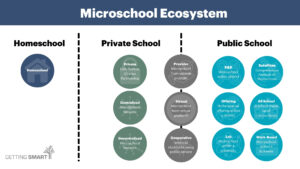
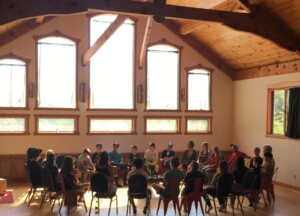
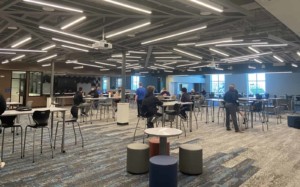
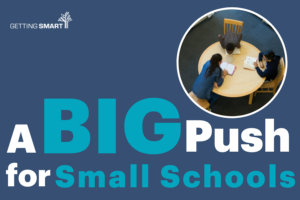
Elise
I just want to point out a scrambled link above. "Action Academy" is supposed to Acton Academy. The second link takes you to the right group. The first link is not a microschool from what I can tell.